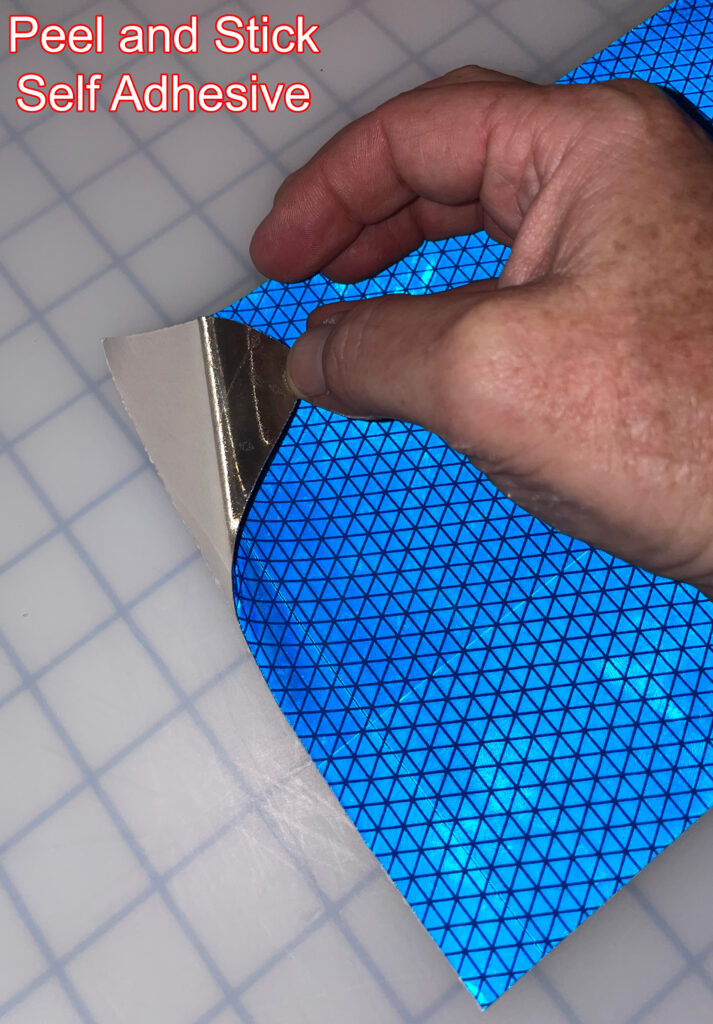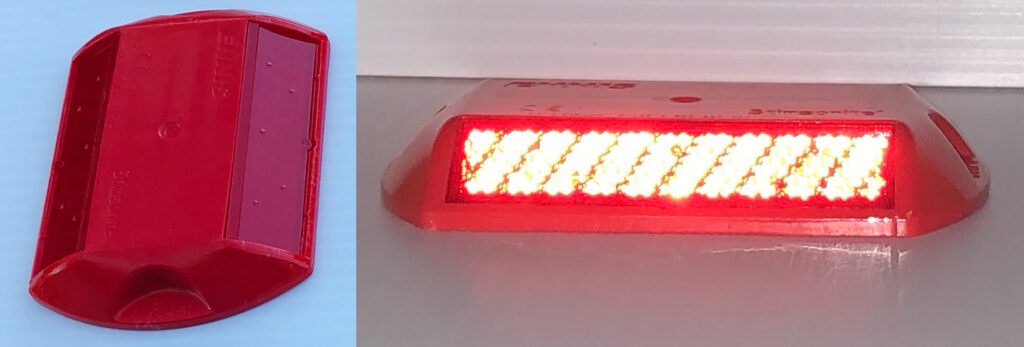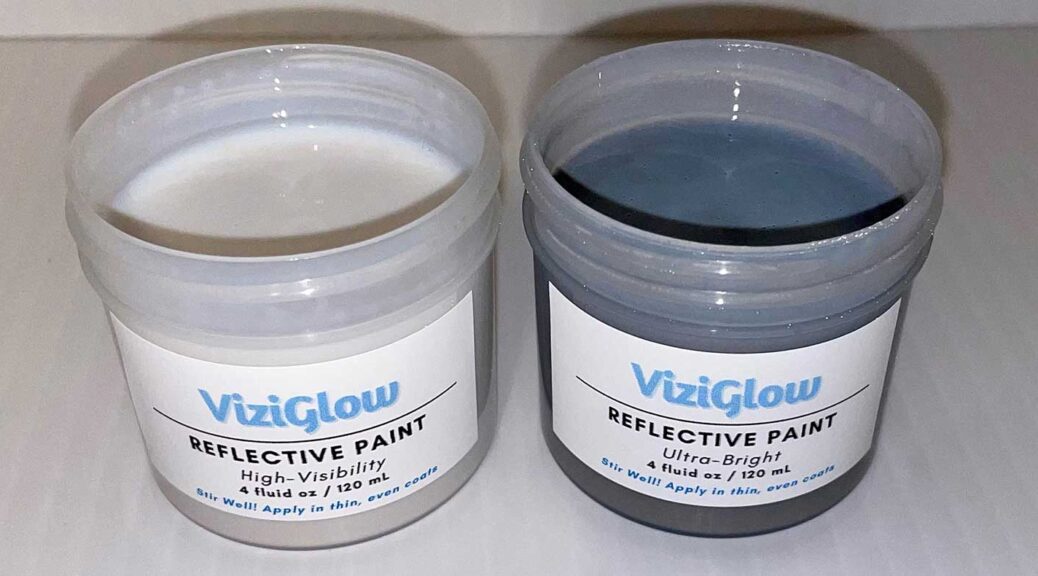Retro reflectivity is often used to make an object more visible at night. This simply means that when made retro reflective, the object collects light from a source, and returns it back to that source more than it returns it anywhere else. More specifically, the object returns much more light than what surrounds it, creating what we know as contrast, and contrast is the reason we see individual objects.

On the surface, the difference between a paint, an adhesive film, or a hard reflector may seem obvious. All end up on the surface of an object, create retro reflectivity, and make it more visible at night. But a closer look at the products reveals distinct differences that separate uses and applications. One simple example is the idea of making a rock in your front yard reflective to approaching traffic at night.
It would make sense that a rock or series of rocks that run along a road would need to be visible to approaching cars for both safety and liability reasons. A reflective application of some type would solve this problem. A solid reflector could be glued to the surface. Pieces of reflective tape could be applied. Or the rock could be coated with reflective paint.
A solid plastic reflector would mark the rock, but would have to be glued on so that the reflectors face the oncoming car. The reflector would show that something was there, however, it would not outline the object and show what it was. So the car would just see a reflector. This may or may not divert them away from the rock.

Reflective tape could be adhered to the rock, but the issue would be how to get a sheet of reflective tape to conform and stick to a rock, given the uneven and rough surface. So several smaller pieces would be needed. If enough pieces were used, it may outline the rock, however, it would look strange, like a bunch of reflective band aids. Another issue would be longevity. The surface is not compatible with an adhesive product like tape. So the life would be short.

Reflective paint could be used to coat the entire surface of the rock, top, bottom, back, and sides. If a grey paint was used, the rock would be very bright at night, but would look very much like just a rock in the daytime. Also, since the rock has a rough, porous surface, a reflective coating will stick very well to it and last indefinitely. The downside to retro reflective paint would be that it only reflects a white color, whereas reflectors and tape will reflect other colors.
For a road surface, reflective tape may stick, but would not last very long. Reflective paint will also stick, but will only be white, so if that is ok, it is a solution. A hard reflector, like a raised pavement marker, would be best, in that it will last a long time, and reflects in colors. It is actually made for that type of application.
For a sign face, a hard plastic reflector would work, but a sign needs to be covered in reflectivity. A retro reflective coating would also work, but again, it would just reflect white. So reflective tape, also known as sign sheeting would work best. It can be CAD cut to make the letters, or used as a background with non reflective letters.
In summary, different surfaces and different applications require different types of reflective treatments. There is not a one size fits all solution. One solution will always be best for an application. So reflective paint, reflective tape, and hard reflectors are not replacements for each other, instead they are tools that can be used to create night time visibility in almost any situation. For example, on a tree, a hard reflector could be nailed in, or a circle of reflective paint could be used. On a rock, reflective paint works best. On a road, a raised pavement reflector is perfect. On a sign where color is needed, reflective tape (sheeting) is optimal. For parking lot logos, only a reflective paint would work. And the list goes on.
